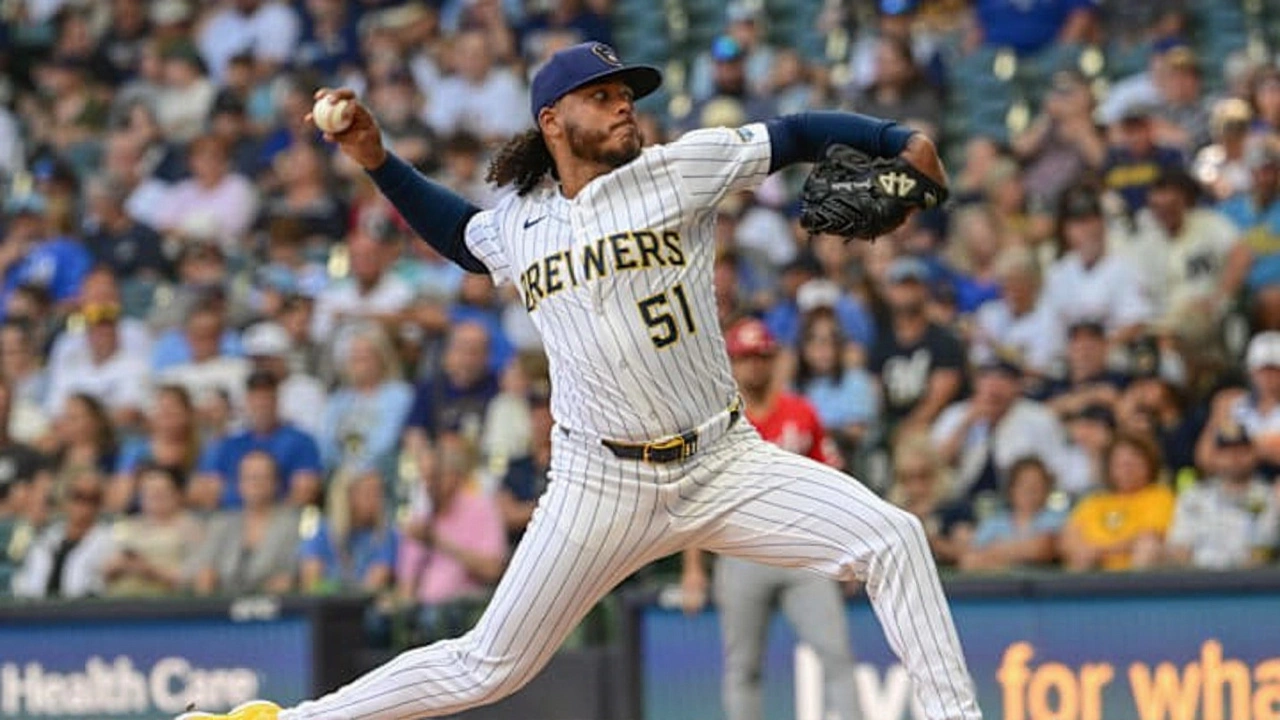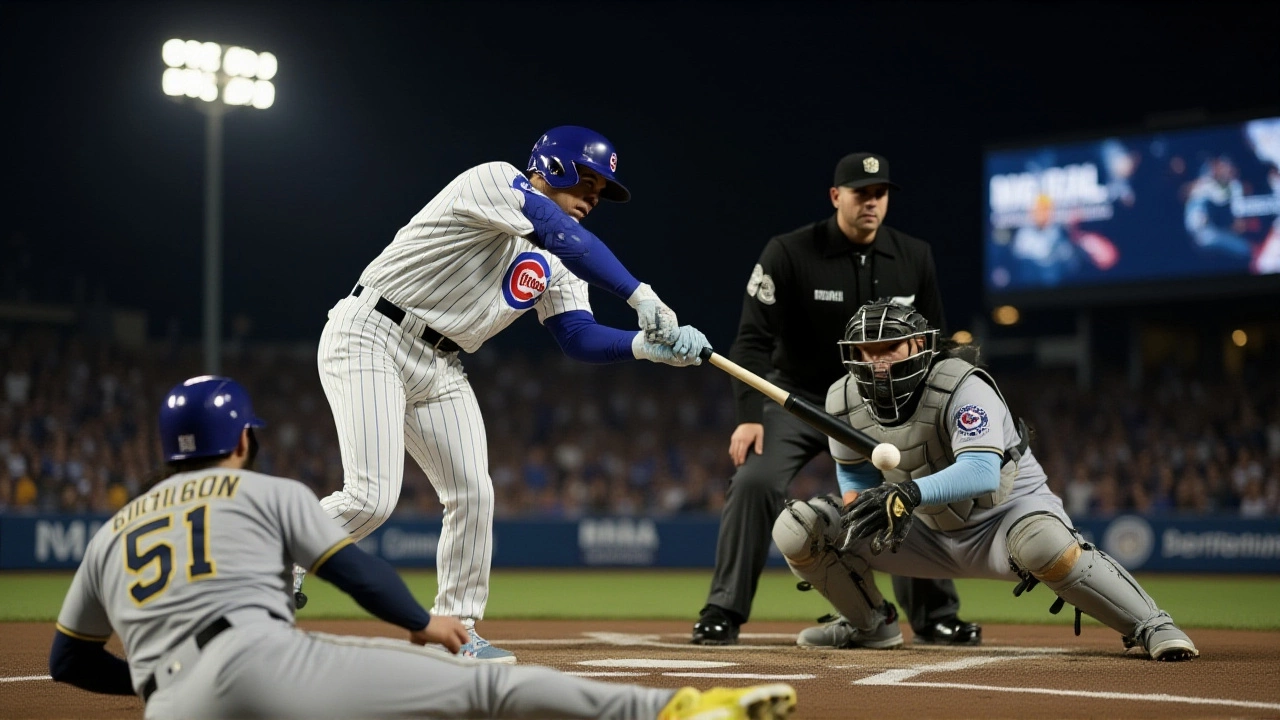When Max Muncy crushed a 104 mph drive into center field with the bases loaded, nobody imagined it would end the inning without a run. The ball, projected to travel 404 feet, brushed the glove of Sal Frelick at American Family Field and sparked a bizarre fielder’s‑choice double play that kept the score dead‑locked at 0‑0.
Why the play mattered more than a home run
Statcast data showed the hit would have been a grand slam at Dodger Stadium and eight other parks. Instead, the ball ricocheted off Frelick’s glove, raced back into the field, and forced runners at second and third out. The official scorer recorded a fielder’s‑choice groundout, the second‑longest double‑play‑in‑play distance since 2015.
Win‑probability models illustrate the swing’s impact: with the homer, the Dodgers’ chance of winning spiked to 88 percent. After the double play, the Brewers nudged ahead to a 56 percent edge, showcasing how one split‑second can flip momentum.
The raw numbers behind the chaos
- Exit velocity: 104 mph
- Distance traveled before deflection: 404 feet
- Pitcher for the Dodgers: Blake Snell, who logged eight dominant innings, 14 swings‑and‑misses on changeups.
- Snell’s recent contract: five‑year, $182 million signed with the Dodgers in December 2024.
- Dodgers’ four‑ace rotation (Snell, Yoshinobu Yamamoto, Shohei Ohtani, Tyler Glasnow) averages $63.5 million annually, dwarfing the Brewers’ entire $62 million payroll.

Voices from the dugout and press box
Brewers manager Pat Murphy called the sequence “very unusual.” “It’s tough for the baserunner to figure out what happened,” he said after the game. “Great defense from Sal and William, and Joey’s relay was huge.”
Frelick, 24, remained modest: “I just reacted; the ball came at me fast, and I tried to keep it in.” Catcher William Contreras added, “We knew Muncy could take it out, so we were ready for anything.” Third‑baseman Joey Ortiz described his throw: “I saw the ball drop, sprinted, and got the relay to second. It was a team effort.”
Muncy himself was baffled. “I’m still kind of confused as to what all went down. It’s definitely the worst fielder’s‑choice double play I’ve ever hit into,” he remarked, shaking his head.
Pitching disparity and its series‑long echo
The Dodgers’ rotation, stacked with four Hall‑caliber arms, contrasts sharply with the Brewers’ leaner staff. Snell’s eight‑inning gem featured 14 changeup swings‑and‑misses, and his blend of velocity and movement forced hitters into weak contact. Brewers third‑baseman Ortiz summed it up: “Whatever he was doing, it worked tonight.”
Murphy leaned into the underdog narrative, noting the money gap: “We’re paying $62 million total, and they’re paying $63.5 million per pitcher on average. Yet baseball’s a game of moments, and tonight we showed we can punch above our weight.”
Dodgers first baseman Freddie Freeman praised the pitching, saying, “Our staff has been solid all month. It’s paid off in October.” The comments underline a growing belief that the Dodgers’ firepower could be decisive, but the Brewers’ resilience suggests the series won’t be a walk‑over.

What’s next for the NLCS?
Game 2 is set for October 14 at the same venue. Brewers officials say they’ll lean on their bullpen and aggressive baserunning to offset the Dodgers’ rotation advantage. Analysts predict a tighter pitch‑count battle, especially if Snell’s arm shows any fatigue after a heavy outing.
For fans, the takeaway is simple: the postseason can turn on a single split‑second. One ball that almost left the park became a “double‑play” headline, and the story is still being written.
Frequently Asked Questions
How does the double play affect the Brewers' chances in the series?
The play kept Game 1 scoreless, preserving the Brewers’ morale and pushing win probability to about 56 percent. By denying the Dodgers a early lead, Milwaukee stayed within striking distance, making the upcoming Game 2 a pivotal turning point.
Why was Max Muncy's hit considered a fielder’s‑choice double play?
Because the ball never left the field of play. After Frelick deflected it, the ball stayed alive, and the defense forced two runners out at second and third. The official scorer therefore recorded a fielder’s‑choice groundout rather than a home run.
What’s the significance of the Dodgers’ payroll versus the Brewers’?
The Dodgers’ four‑ace rotation commands an average annual value of $63.5 million, outpacing the Brewers’ entire 2025 roster payroll of $62 million. This financial disparity highlights an underlying resource gap, though postseason baseball often rewards timely execution over raw dollars.
Will Blake Snell be available for Game 2?
Snell threw eight innings on short rest, which is unusual for a postseason starter. The Dodgers’ staff will evaluate his arm health overnight, but they have depth with Yamamoto, Ohtani, and Glasnow ready to step in if needed.
What does this play say about the Brewers' defensive capabilities?
It showcases their heads‑up defense. Frelick’s quick reaction, Contreras’ positioning, and Ortiz’s precise relay highlight a cohesive unit that can make plays under pressure, a factor that could keep them competitive despite a lighter payroll.